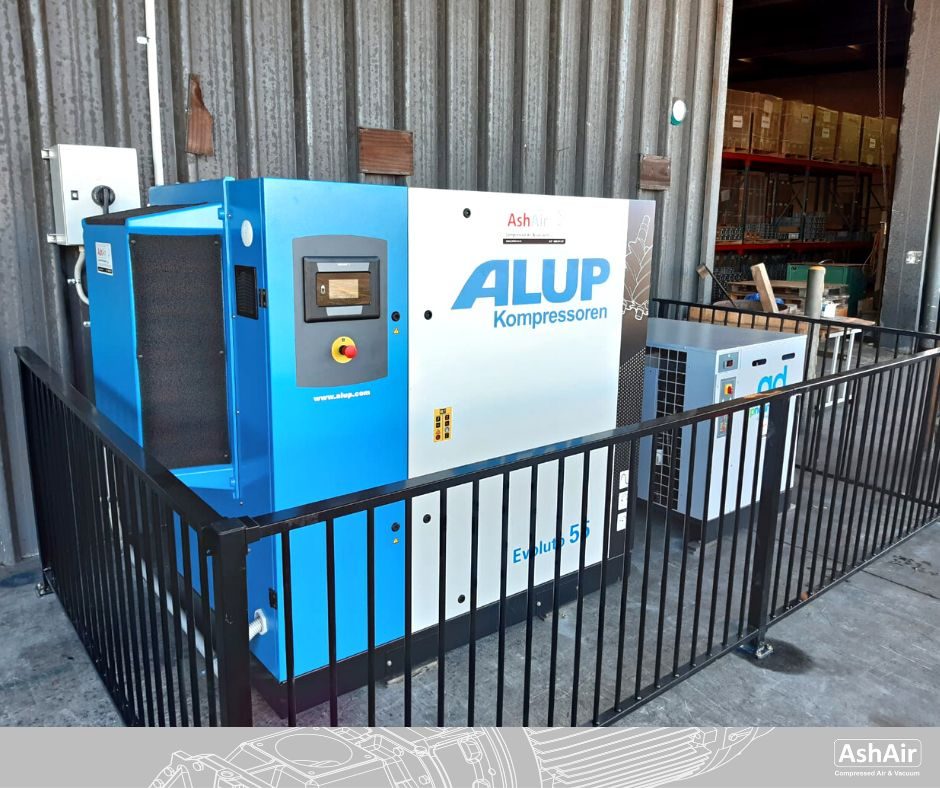Proportioning the Compressed Air Dryer
Trying to figure out which air dryer capacity is best for you? Here are some factors to consider. Read More…
.jpeg) Air
Compressor Commissioning & Installation Services
Air
Compressor Commissioning & Installation Services
The definition of Commissioning from Compressed Air Best Practice magazine, “Compressed air system commissioning is the process for measuring, testing, adjusting, and documenting that the performance of an entire compressed air system achieves the target system efficiencies (scfm/kW as a whole and for each piece of equipment) in all load regimes and potential failure modes.”
Proper compressor installation and commissioning helps ensure trouble-free startup and long-term reliability. Thorough inspection and critical review during each phase of the installation process eliminates “built-in” deficiencies or problems which could later result in equipment failures or poor performance.
Checking your air compressor before the installation is critical to its' success. The checklists in the below sections are intended to aid in this inspection/review process, but refer to your manufacturer's instruction manual for exact details.
This is probably the single most important startup item that should be conducted before starting the compressor.
The compressor should be “bump started” (i.e. control power de-energized immediately after startup) and the direction of the pressure gauge movement should be checked to insure that the discharge pressure rises upon compressor start. If the compressor rotation is backwards the discharge pressure will be pulled immediately into a vacuum, on a rotary unit this will starve the air-end of needed oil and cause air-end damage within a seconds. If the rotation is backwards, the phasing of the compressor should be corrected (reversing any two leads will change rotation) before attempting to re-start the compressor.
Some 3 phase units come with a piece of paper taped to the top of the cabinet. If the electrical phases are correct when started it will blow the paper up revealing an OK on the bottom, this indicates the rotation is correct. In cases the phases are out of sequence when started air will be pulled into the cabinet sucking the paper down, this would indicate incorrect phase sequence and wrong motor rotation and would need corrected immediately before restarting.
Great news, your pre-commissioning is all set. Now is time for installation and the next round of commissioning checklists. Below are a few things to keep in mind during start up.

Do you have an idea for our #expertcorner? Let
us know!
Ash Air has been around in New Zealand since 1979, and we’ve grown into a nationwide company with international support and a reputation for quality and reliability.We look after all things compressed air for your business!
Ash Air's range of Chicago Pneumatic, Alup, Pneumatech, and Quincy compressors are used extensively around the world in industries ranging from oil and gas to food, automotive and farming, and we bring you these world class compressors here in the land of the long white cloud.Our technicians are compressed air equipment experts and are dedicated to addressing customer needs. Supported by a 13 locations nationwide, Ash Air offers one of the widest selections of compressed air equipment and parts available today in New Zealand.
With Ash Air compressors, you can count on reliability and high performance for even the most demanding applications. We focus our efforts on the following:
Talk to the team today:
Proportioning the Compressed Air Dryer
Trying to figure out which air dryer capacity is best for you? Here are some factors to consider. Read More…
Maintenance budget: 8 factors to consider
Just like any other equipment, a compressed air installation also requires the necessary maintenance work during its entire lifespan. Even though maintenance costs are only about 5 to 10% of a machine's annual operating costs, failure to budget for maintenance can have potentially disastrous consequences. Read More…
The air dyer is one of the most ignored cooler in the system. A dirty condenser will cause water in the lines, or worse it will cause complete dryer failure. Read More…